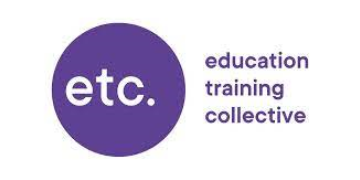Disadvantaged students are now three and a half grades behind their peers by the end of the 16-19 phase. This should be a hugely worrying statistic for policy makers and is not a problem we can expect to correct itself; change is needed if we want to see this gap narrow.
This week’s Education Policy Institute publication is the fourth time we’ve published an update on our 16-19 disadvantage measure, but this is not just a routine update. In fact, our new analysis plugs an important gap in our narrative to date.
We’ve previously noted with concern how the 16-19 disadvantage gap widened throughout the pandemic. Disadvantaged students being less likely to enter A levels, for which grades increased the most, was one of the reasons the overall disadvantage gap widened under centre- and teacher-assessed grades (CAGs and TAGs) in 2020 and 2021. What we were unable to disentangle was the extent to which other factors such as learning loss were at play.
The return to exams in 2022 allowed us to understand if the gap was wider than it was pre-pandemic, without the complication of CAGs and TAGs. The answer, to be blunt, is yes.
Grading distributions in 2022 were a halfway house between those of 2019 and those of 2021, so it’s not true that the impact of CAGs and TAGs on the disadvantage gap have been completely stripped out. However, the effect will be diminished. The gap that remains will be more reflective of how school closures, learning loss and the totality of disruption over the past few years may have affected those from different backgrounds unequally. Or in other words, it has become easier to start focusing on important differences in students’ learning and ability again, rather than how the government has been awarding grades.
By comparison to our findings, it is alarming how much of the big picture official measures of attainment gaps miss by not publishing a measure for 16-19 year olds that includes all qualifications. In our analysis, we demonstrate how disadvantaged students are less likely to take A levels, and how rapid the increased take-up of applied general qualifications has been in recent years.
The upshot of this is that the official A level gap measure does not include most disadvantaged students, and changes in the official applied general gap measure largely reflect changes in entry patterns between students from different backgrounds. As such, neither provides a consistent measure of how disadvantaged students’ grades compare to their peers.
Our report also provides an update on gaps between geographic areas. The areas with the narrowest gaps are primarily London boroughs, as has been the case consistently in recent years. In Southwark for example, disadvantaged students were actually 2 grades ahead of the average non-disadvantaged student nationally.
Conversely, there are certain local authorities where the 16-19 disadvantage gap has widened substantially. For example, in Doncaster, Herefordshire and Sunderland the gap was a little over three grades in 2019, widening to around five grades or more by 2022. We don’t yet know what is driving these falls: changes in the characteristics of students, the unequal impact of the pandemic, or changes in provision are all possibilities.
When we published our first report measuring the 16-19 disadvantage gap back in 2019, we called for a student premium fund, in keeping with the focus on disadvantage for school-age students. At the time, this was to tackle a stubbornly wide but nonetheless stable gap. Several years on, and with the gap widening, the challenge feels starker. There is no doubt that more support is needed in this phase, and EPI are one of many organisations calling for a student premium. EPI will be undertaking further work to scope out how such a premium might work in practice.
If we are to see these trends reverse, then serious action will be needed. Whichever government is in power by this time next year, the burgeoning gap in attainment for students in the final stage of their compulsory education can no longer be ignored.















Your thoughts